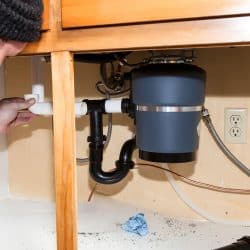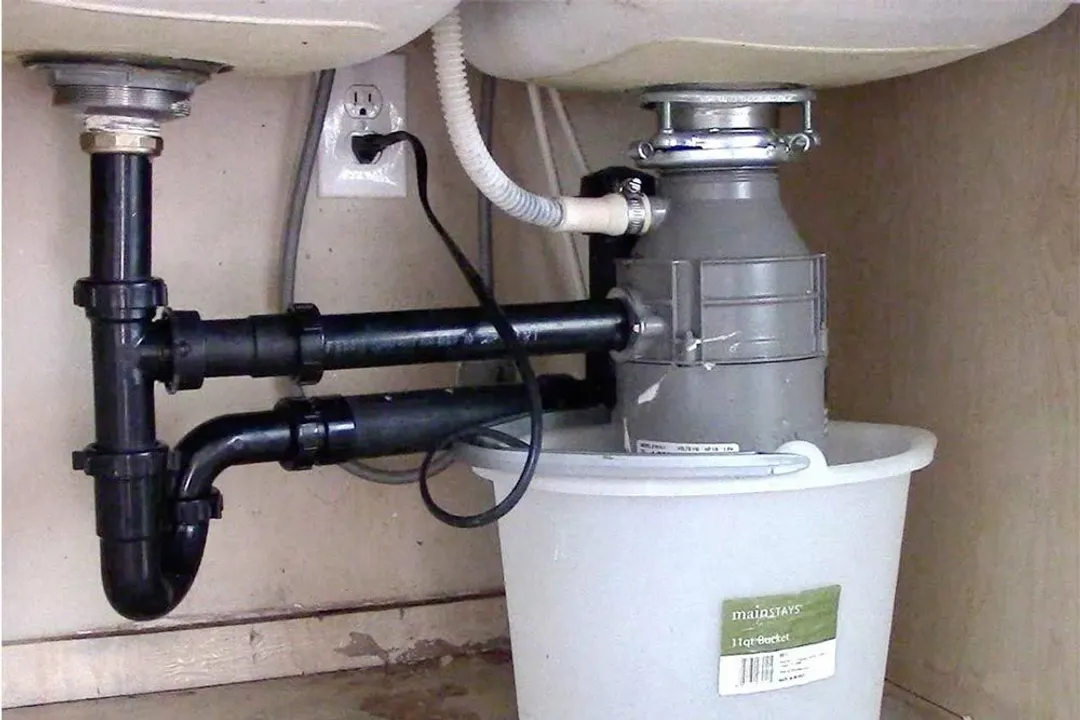Useful Techniques for Repairing a Dripping Garbage Disposal
Useful Techniques for Repairing a Dripping Garbage Disposal
Blog Article
Listed here down the page you will discover additional reliable tips pertaining to Why Is .

Waste disposal unit are necessary cooking area appliances that assist in getting rid of food waste effectively. Nevertheless, a dripping waste disposal unit can be an irritating and messy trouble to handle. Fortunately, many leaks can be fixed easily with a couple of easy steps. In this short article, we will go over just how to take care of a leaking waste disposal unit successfully.
Introduction
Waste disposal unit are set up under cooking area sinks and are developed to shred food waste right into smaller sized items, enabling it to travel through the pipes system quickly. While these gadgets are generally reputable, leakages can take place over time because of wear and tear, loose links, or damages to the device.
Common Causes of Leakages in Garbage Disposals
Worn Seals and Gaskets
Seals and gaskets play a critical duty in avoiding water from dripping out of the garbage disposal. With time, these elements can wear away, causing leaks around the disposal system.
Loose Links
The connections in between the garbage disposal and the pipes system can come to be loosened over time, causing water to leak out during operation.
Cracks or Holes in the Disposal System
Physical damages to the garbage disposal, such as splits or openings in the real estate, can also cause leaks.
Recognizing the Source of the Leak
Before trying to deal with a dripping garbage disposal, it is essential to identify the source of the leak. This can normally be done with aesthetic assessment or by carrying out simple examinations.
Visual Assessment
Evaluate the waste disposal unit unit carefully for any kind of indications of water leak. Pay close attention to locations around seals, gaskets, and link points.
Evaluating for Leaks
One way to test for leaks is by running water through the disposal unit and checking for any noticeable indicators of leak.
Devices and Products Needed for Taking Care Of a Leaking Waste Disposal Unit
Prior to starting the fixing procedure, gather the required devices and materials, including a screwdriver, flexible wrench, plumbing professional's putty, replacement seals or gaskets, and epoxy or patching material for fixing fractures or holes.
Step-by-Step Guide to Fixing a Dripping Waste Disposal Unit
Shut off the Power
Before attempting any kind of repairs, ensure that the power to the waste disposal unit unit is shut off to prevent the danger of electric shock.
Situate the Leakage
Recognize the exact place of the leakage and determine the cause.
Tighten Links
Use a wrench to tighten any loosened connections in between the disposal device and the plumbing system.
Change Seals or Gaskets
If the leak is because of used seals or gaskets, get rid of the old elements and change them with brand-new ones.
Patching Fractures or Openings
For splits or openings in the disposal system, use epoxy or a suitable patching material to seal the damaged area.
Evaluating the Garbage Disposal After Repair Service
Once the repair service is complete, test the garbage disposal by running water through it to ensure that the leak has actually been resolved.
Preventive Maintenance Tips to Avoid Future Leaks
To stop future leakages, it is vital to do routine maintenance on your waste disposal unit. This includes keeping it tidy, preventing placing non-food products or tough objects down the disposal, and occasionally looking for leakages or other concerns.
Conclusion
In conclusion, dealing with a dripping waste disposal unit is a reasonably uncomplicated procedure that can be completed with basic tools and products. By complying with the actions described in this post and exercising preventative upkeep, you can keep your garbage disposal in good working condition and stay clear of pricey repairs in the future.
HERE’S HOW TO FIX YOUR GARBAGE DISPOSAL
WHAT TO DO IF SOMETHING IS STUCK IN YOUR GARBAGE DISPOSAL
If the impeller won’t turn, there’s probably something stuck in the disposal. It could be a steak bone or peach pit, although plumbers report pulling all sorts of inappropriate objects out of disposals, such as bottle caps or aluminum foil. Make sure power to the disposal is off, and look inside to see if you can see the source of the jam.
Never stick your fingers in a disposal. Pull out anything you see with tongs or pliers.
If the disposal still won’t work, it may be time to call a plumber or consider buying a new disposal. GEM Plumbing & Heating is here for all of your garbage disposal needs.
WHAT TO DO IF YOUR GARBAGE DISPOSAL DRAIN IS CLOGGED
Take everything out from underneath your sink and put a bucket or other container under your disposal to catch any water that drains out. Disconnect your disposal from the power supply. If it’s plugged into a wall outlet, unplug it. If it’s hardwired into an electrical box, go to the electrical panel and turn off the breaker for the disposal. Pour ¼ cup of baking soda into the drain, followed by ½ cup of white vinegar. Give the solution a few minutes to fizz and do its work. Look into the disposal with a flashlight to see if you can see an object that might be causing the clog. If you see it, remove it using tongs or pliers. MORE TIPS ON DEALING WITH A CLOGGED GARBAGE DISPOSAL
Never use drain cleaner in a garbage disposal. It can damage the plastic parts inside the disposal. You can also be splashed with the caustic liquid while working to clear the clog. Beware! Never stick your fingers into a garbage disposal. Trust us — not a good idea. In many instances, your dishwasher drains through your garbage disposal. This allows the disposal to grind any large food particles that may be drained out of your dishwasher. There are some jurisdictions, however, where the plumbing code prohibits such a connection. WHAT TO DO WHEN YOUR DISHWASHER DRAINS THROUGH THE DISPOSAL
Run some water in the sink so your plunger has at least a ½-inch of water to create a seal and plunge vigorously up and down several times. You may need to repeat this several times. Run hot water down the drain to clear any residue that remains.

We were guided to that report on Why Is from a good friend on a different web address. Don't hesitate to take the opportunity to promote this blog post if you enjoyed reading it. Thanks a lot for taking the time to read it.
Schedule Today Report this page